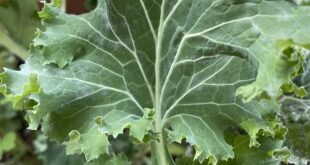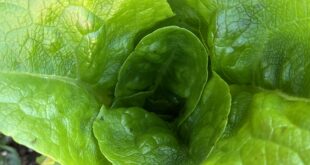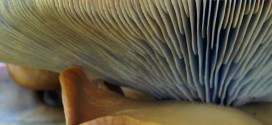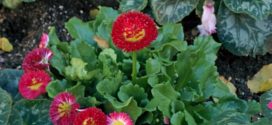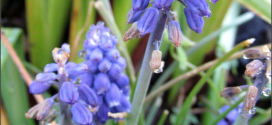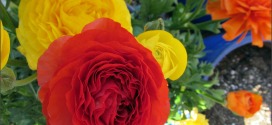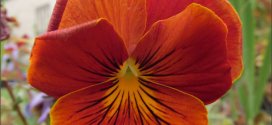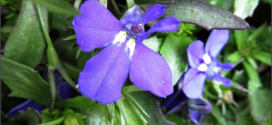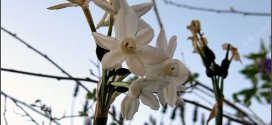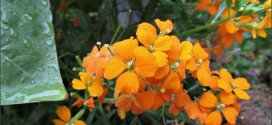Cold-hardy and resilient, kale is an easy member of the cabbage family to grow. You can set out plants quite early in spring as long as you protect the young plants from severe cold winds with a cover. They will grow steadily for months until the weather gets too warm. You’ll get a second chance to plant kale in the …
Read More »Tag Archives: Spring
Bibb Lettuce
Bibb type lettuces are known for their ‘buttery’ taste and velvety texture, and small loosely formed heads. Relative to most other lettuce types, Bibbs are slightly more tolerant of heat. Even so, they are best planted early or late in the season in spring, away from the intense summer sun. They may be started indoors several weeks prior to the …
Read More »Pulgas Ridge Open Space Preserve
Pulgas Ridge is a small park, part of the Mid-Peninsula Open Space District, off of I-280 near Edgewood Road, just north of Edgewood County Park. There are about 6 miles of trails in the park with some great climbs and descents with amazing peninsula views. Most trails are single-track with a few paved road sections. The weather is usually mild. …
Read More »English Daisy – Bellis perennis
English Daisies have long been popular for spring bedding, particularly in mild winter regions. Plants are biennial, usually lasting through one season, but self-seeding to provide future generations. This strain flowers well even in the first year, with little double button flowers of bright rose pink. Removing faded flowers regularly will keep plants blooming well into the summer. Often used …
Read More »Muscari – Grape Hyacinth
Grape Hyacinth is one of the first spring flowers and has a great fragrance. The first time you plant them should be in November. The plants naturalize (meaning that the next year’s flowers are the same). Severe poisoning from hyacinth or tulip poisoning is often seen when dogs dig up freshly planted bulbs or having access to a large bag …
Read More »Ranunculus
Ranunculus are easy to grow and provide fresh cut flowers. Lots of colors, straight stems, long vase life and copious blooms. In return, these lacy-leafed plants will ask for sunshine, moderate temperatures and very light watering. Your borders and beds will look great, your office desk will sport fresh flowers for pennies and your neighbor will be by asking for …
Read More »Pansy
Pansy, Viola x wittrockiana Family: Violaceae (vy-oh-LAY-see-ee) (Info) Genus: Viola (vy-OH-la) (Info) Species: x wittrockiana (wit-rok-ee-AH-na) (Info) Category: Annuals Tropicals and Tender Perennials Height: under 6 in. (15 cm) 6-12 in. (15-30 cm) Spacing: 6-9 in. (15-22 cm) Hardiness: USDA Zone 7a: to -17.7 °C (0 °F) USDA Zone 7b: to -14.9 °C (5 °F) …
Read More »Lobelia
Blue Lobelia, Lobelia siphilitica Family: Campanulaceae (kam-pan-yew-LAY-see-ee) (Info) Genus: Lobelia (low-BEE-lee-a) (Info) Species: siphilitica (sigh-fy-LY-tih-kuh) (Info) Category: Perennials Height: 24-36 in. (60-90 cm) Spacing: 18-24 in. (45-60 cm) Hardiness: USDA Zone 4a: to -34.4 °C (-30 °F) USDA Zone 4b: to -31.6 °C (-25 °F) USDA Zone 5a: to -28.8 °C (-20 °F) USDA …
Read More »Narcissus – Paper White
Narcissus papyraceus (from papyrus and aceus; meaning paper-like), one of a few species known as “Paperwhite,” is a perennial bulbous plant native to the western Mediterranean region, from Greece to Portugal plus Morocco and Algeria. The species is considered naturalized in the Azores, Corsica, Texas, California and Louisiana. The white flowers are borne in bunches and are strongly fragrant. It …
Read More »Wallflower
From fast-growing clumps of strap-shaped foliage sprouted in early March, an abundance of bud clusters appear in April, which quickly pop open in an endless succession of very fragrant, absolutely neon-bright orange blooms well into mid-summer. Siberian Wallflower harmonizes beautifully with its fellow biennial Forget-Me-Not (Myosotis), the warm orange and cool sky blue. Despite the common name, Siberian Wallflower originated …
Read More »